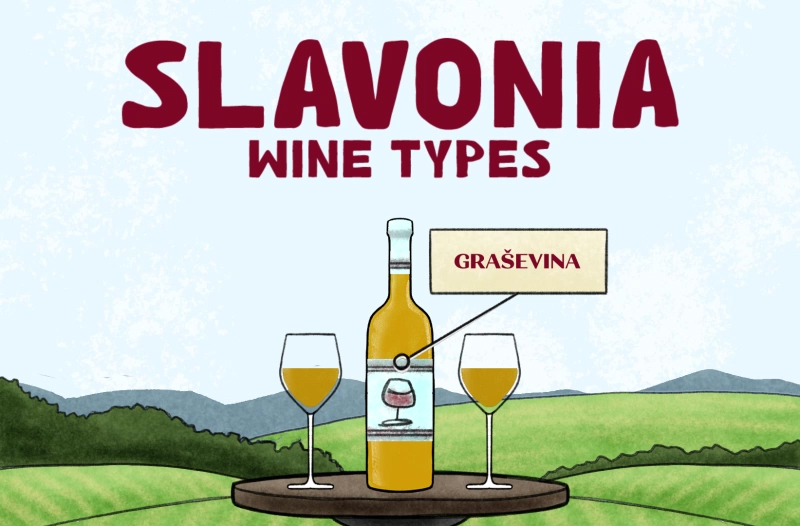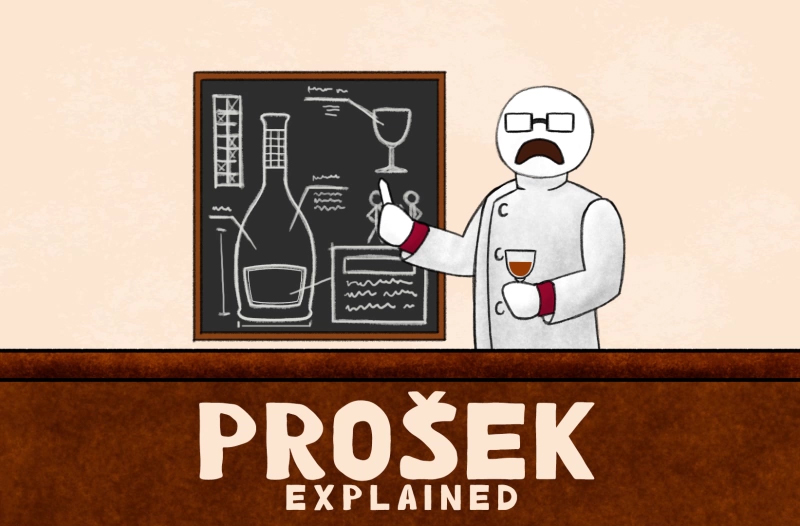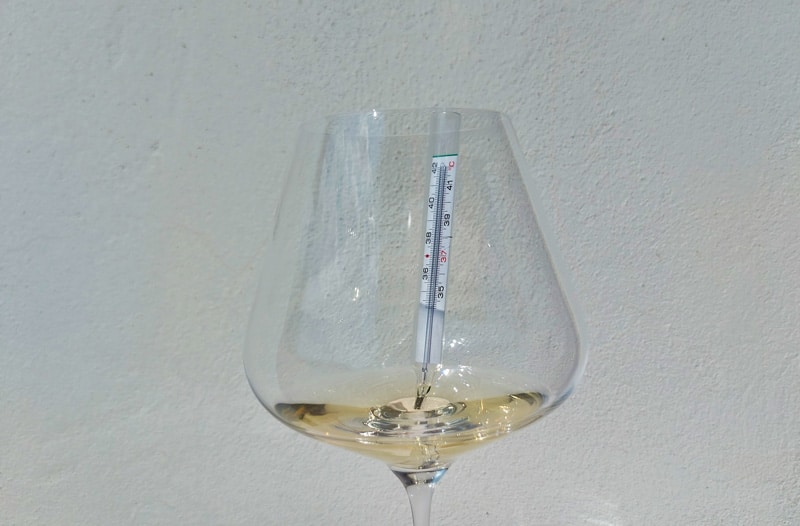Origins Of Zinfandel Wines Finally Revealed

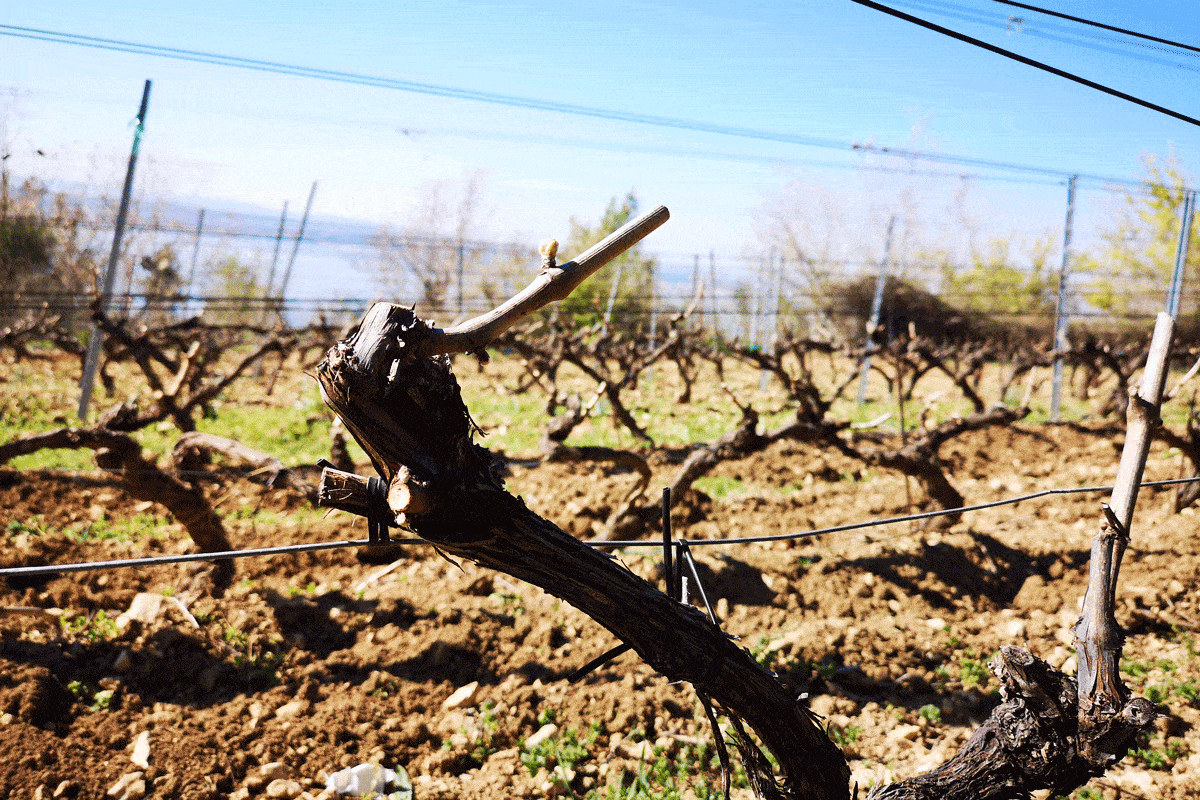
The story of grape varieties’ genetics is a fascinating one and one that has captured the attention of wine lovers worldwide. Especially one that revolves around the US signature grape – Zinfandel. The question of its origin sparked a great deal of interest, and we will uncover how it caused a revival of the forgotten Croatian grape and inspired incredible new wines. But, before we head into a detailed exploration, let’s answer the most frequently asked question about Zinfandel and Primitivo origin!
Is Primitivo the same as Zinfandel?
For over a century, the debate has raged on whether Primitivo and Zinfandel are one and the same grape variety.
The first theory was that Zinfandel originates from Primitivo. The second one is that both of them originate from native Croatian Plavac Mali. But after decades of meticulous research, the truth has finally been uncovered!
In 2001 a team of researchers from the University of California confirmed that Primitivo and Zinfandel share the same DNA profile, indicating they are the same grape variety.
The true origin of Zinfandel and Primitivo is traced back to a grape called Crljenak, an ancient Croatian grape variety.
This exciting discovery has revolutionized the world of wine, ending years of uncertainty and confusion.
Wine lovers can now rest easy knowing the true origin of Zinfandel and enjoy their favorite bottle with a newfound appreciation for its rich history and unique flavor profile.
Zinfandel returns home
Genetics can mean all or nothing. It can only get you so far in your quest for that one, elusive expression of grape juice which sends you swooning and you’ll never be the same again.
What wine lovers seek cannot be achieved by a grape’s varietal qualities alone.
Science can help us understand nature, but nature enables us to perceive wine’s different expressions, themselves determined by countless other factors.
Many of the best Croatian and most expensive wines are made in Central and South Dalmatia, home of almost all native Croatian reds, best showcased in the Croatian wine map below.
It is also the birthplace of Plavac Mali, an indigenous Croatian variety with an interesting connection to Zinfandel and Crljenak, another native Croatian variety, which has the leading role in this story of origin.
Picture 1. Croatian wine map
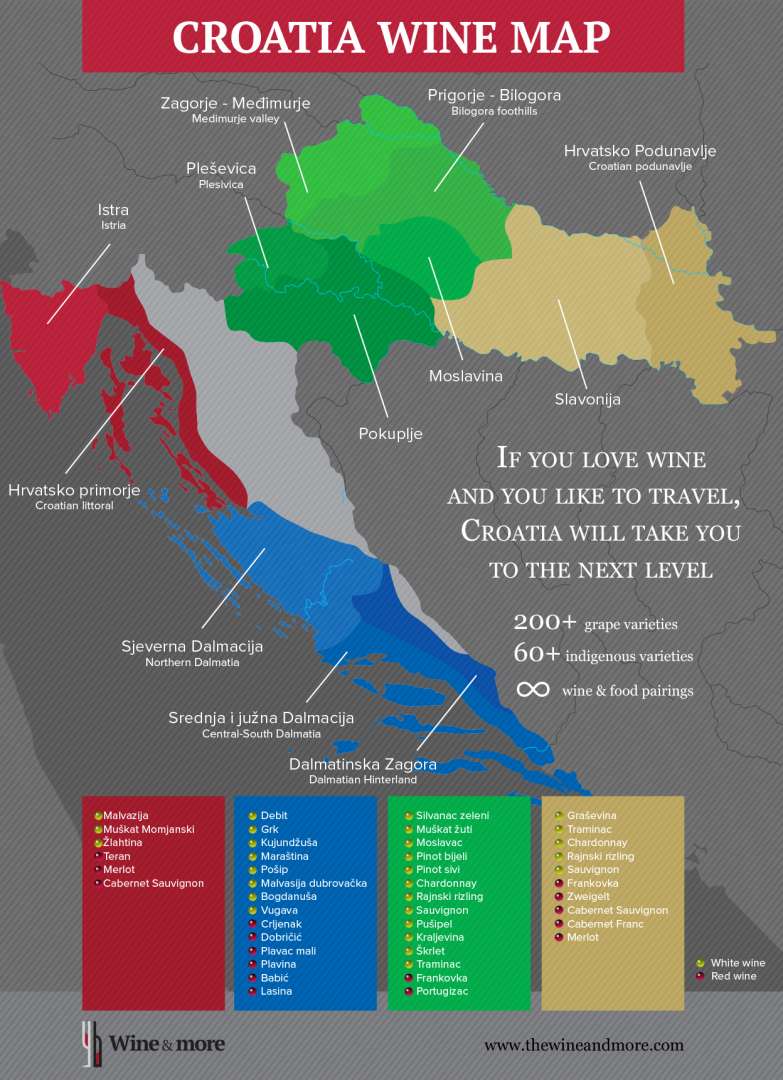
In the 1990s scientists and wine experts joined to uncover the mysterious origins of the Zinfandel grape variety.
With the help of DNA technology and a team of researchers from Italy and Croatia, Professor Carole Meredith, grapevine geneticist at UC Davis, led the research to discover the true origin of this iconic wine.
Picture 2. The origins of Zinfandel revealed through DNA research
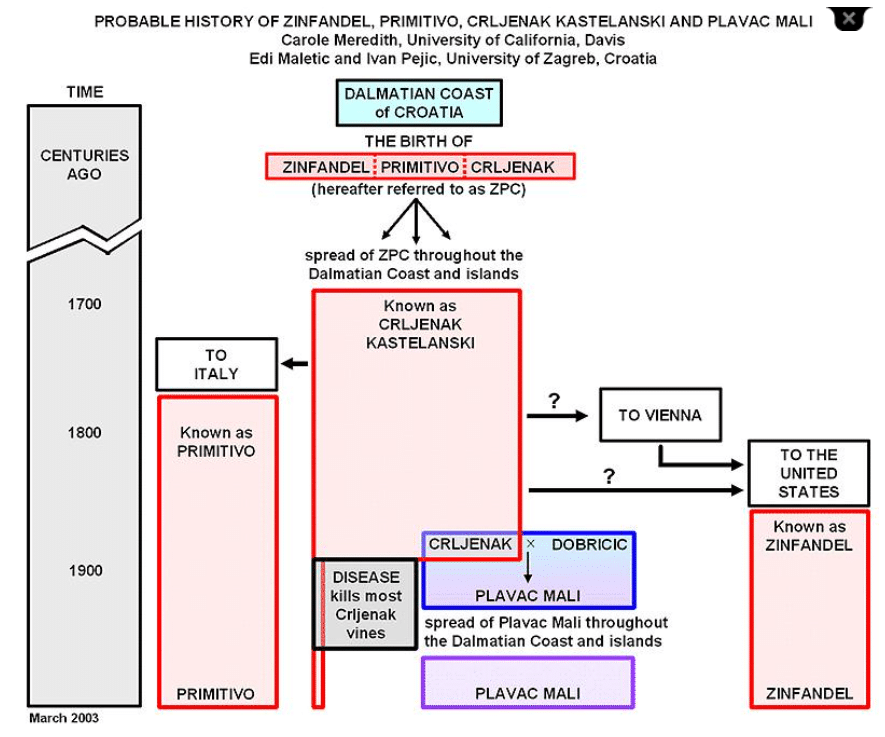
The findings were groundbreaking: a Crljenak old vine found in Croatia was genetically identical to Zinfandel, providing key insights to develop high-quality clonal material for future vineyards.
After the research, the grape variety called Crljenak, Pribidrag, and Tribidrag (its oldest name) experienced a renaissance and is today planted by many Dalmatian winemakers.
Some seriously good Croatian wines would never exist if it weren’t for the discovery. That proves that it’s crucial to conduct research and explore vineyards in search of old, neglected, almost forgotten varieties that have the potential to shake up the world wine scene and become genetically significant, just like Crljenak did.
Back in the beginning, in 2001, a grape variety known as Crljenak Kaštelanski was discovered by chance in the cliffside vineyards of Kaštela, a town located in the Dalmatian region.
The grape had been planted by winemaker Ivica Radunić’s father around 40 years prior, using bud wood that originated from a vineyard planted by his grandfather even earlier.
Interestingly, the name of the grape – which translates to “black grape of Kaštela” – appeared to be a locally-referenced name that had developed over time.
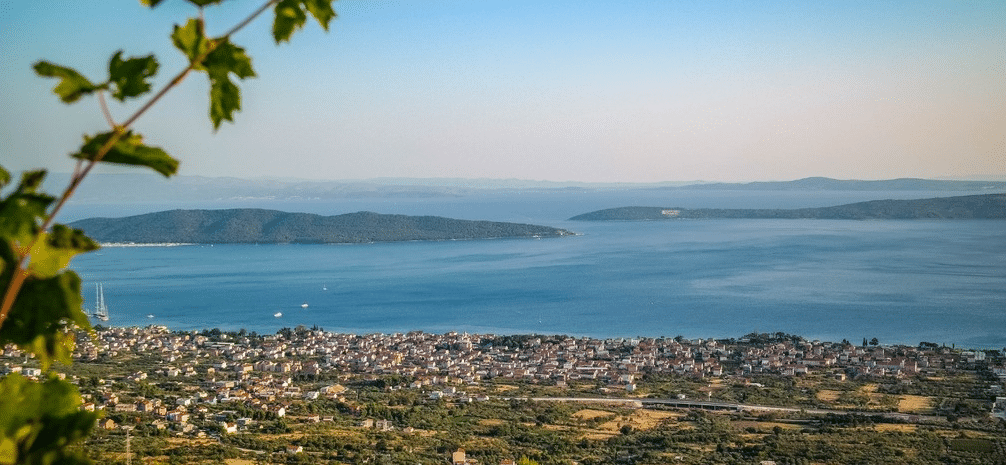
In 2002, the intention was to seek more clues about Zinfandel’s origin. During a visit to a vineyard in Omiš, a team made an interesting re-discovery when they came across a grape that bore a striking resemblance to Zinfandel.
However, the locals referred to it as Pribidrag, which closely resembled the name Tribidrag mentioned first in 15th-century literature.
Further research revealed that Tribidrag was actually a highly regarded court wine during the period of Venice’s dominance in the Mediterranean, which sheds light on the historical significance of the grape.
Although, once one of the most planted grape varieties in Dalmatia, during the late 19th century, in its country of origin, the variety began to be neglected. Especially after the arrival of downy mildew, powdery mildew, and phylloxera from America.
Plavac Mali, its descendant, spread in its place.
The journey to fame
Imagine a story where, because of the quality and historical significance, native clones were somewhere near the 18th century, taken to Italy. In Italy, they named the grape – Primitivo, and for a reason. It ripens much earlier than the other varieties grown in Apulia.
After Apulia, Crljenak, under the new name Zinfandel, in the early twenties of the 19th century, was brought to the US, from the Imperial State Nursery in Vienna.
Back in the day, Imperial State Nursery housed numerous varieties planted along the Austrian-Hungarian monarchy. Within a few decades, Zinfandel became the most planted and popular American red grape variety.
Regarding etymology evidence, it is evident that Tribidrag rightfully deserves the right to be – prime.
While the names Primitivo and Zinfandel were first mentioned in 1799 and 1837, references to Tribidrag can be traced back to the 15th century.
Etymologically, the name Tribidrag is derived from the Greek language and translates to “early ripening.” Similarly, the Italian name for this variety, derived from the Latin language, is primativus, which means “the first to ripen.
The Croatian Zinfandel characteristic
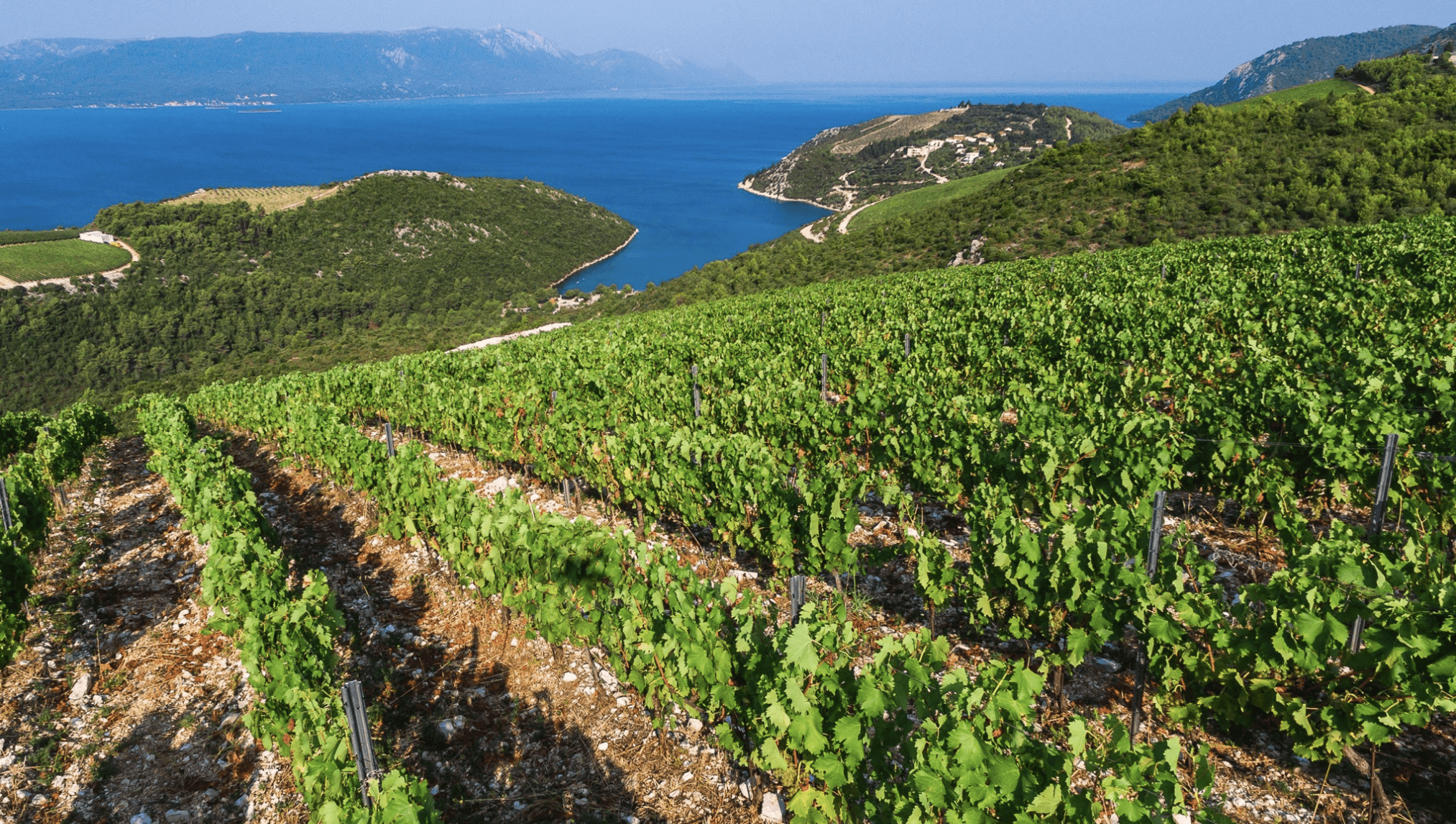
Crljenak is known to thrive in the Dalmatian region, particularly on limestone soils and hilly terrain. In this region, many vineyards are situated on steep slopes which allows for wind exposure and increases soil’s salinity due to nearby sea influence.
The result is a unique flavor profile in the wine. Crljenak grapes also possess a higher tannin content, as they ripen relatively early, requiring fewer sunny hours to develop a high sugar and acidity level.
So, if you get the chance, we strongly recommend tasting some of the Crljenak wines produced by Dalmatian winemakers.
Notable Crljenak from Kaštela winemakers:
- Vuina Štafileo Crljenak,
- Bedalov Crljenak,
- Matela Crljenak,
- Radunić Crljenak,
- Putalj Crljenak,
- Kaštel Sikuli Kaštelanski Crljenak.
Notable producers from other Dalmatian regions:
- Rizman Tribidrag (Komarna),
- Grabovac Tribidrag (Imotski),
- Stina Tribidrag (Brač),
- Benmosche family Zinfandel (Pelješac),
- Korta Katarina Zinfandel (Pelješac),
- Krolo Crljenak Kaštelanski (Strmendolac),
- Zlatan Crljenak (Biokovo),
- Mimica Pribidrag (Omiš),
- Vinski Dvori Kairos Crljenak (Trogir),
- Matuško Zinfandel (Pelješac),
- Grgić Zinfandel (Pelješac),
- Dubrovački podrumi Crljenak (Konavle).
Can Crljenak influence Zinfandel?
How could a tiny and obscure little wine country such as Croatia all of a sudden start exerting influence over a well-established market, such as that dominated by California’s Zin?
What does it really mean for hundreds of thousands of quality Zinfandel bottles made in California?
Incidentally, more and more wine lovers have recently been ordering a specific varietal wine from Wine&more and the variety is – Zinfandel.
Check out how Wine&more team covered the mystery of Zinfandel’s origin in the video.
It became a regular thing for wine enthusiasts to order Croatian Zinfandel wine cases which were carefully handpicked to showcase the subtle differences between Croatian wines made from the same variety but carrying many different names (Tribidrag – Crljenak – Pribidrag – Zinfandel).
What moves most of these wine lovers to order bottles of some obscure Crljenak Kaštelanski is genuine curiosity and a desire to understand any similarities or differences between California’s Zin and its Croatian ancestor.
Not surprisingly, perhaps: wine lovers searching for knowledge and answers need reference points. Sooner or later, you might as well end up realizing that Pinot Noir you were obsessing about actually has more in common with Shiraz than it does with a fine Burgundy.
At this point, you either switch over to Shiraz or start exploring the Cote d’Or. Along the way, you might also, for instance, find yourself comparing an Oregon Pinot to whatever bottle of Chambolle-Musigny happens to be at hand.
The more you taste, the more you train your palate and memory, the more you pursue peculiar profiles, and the likelier you are to gradually develop a deeper insight.
And then, before you know it, your favorite Zin is no longer your good old trusty long-time favorite, but instead one of Croatian.
The Wine&more largest markets happen to be the largest wine markets generally: the US and UK. In 2020, however, we also saw an increasing interest in Croatian wines from Scandinavian countries. Overall, “Croatian Zinfandels” as a category have seen a 19% growth over the period.
The figures themselves are still minuscule from a global or US market perspective, but, if we look at what exactly drove this growing demand, an interesting picture begins to emerge. We noticed that many orders were of Tribidrag or Crljenak wines alone.
Our Customer Care has found out that 7 out of 10 of Crljenak purchases are driven by a desire to compare and share their experience on Californian Zinfandel, Italian Primitivo, and Croatian Crljenak.
Picture 3. Croatian Zinfandel Wine Case at Wine&more
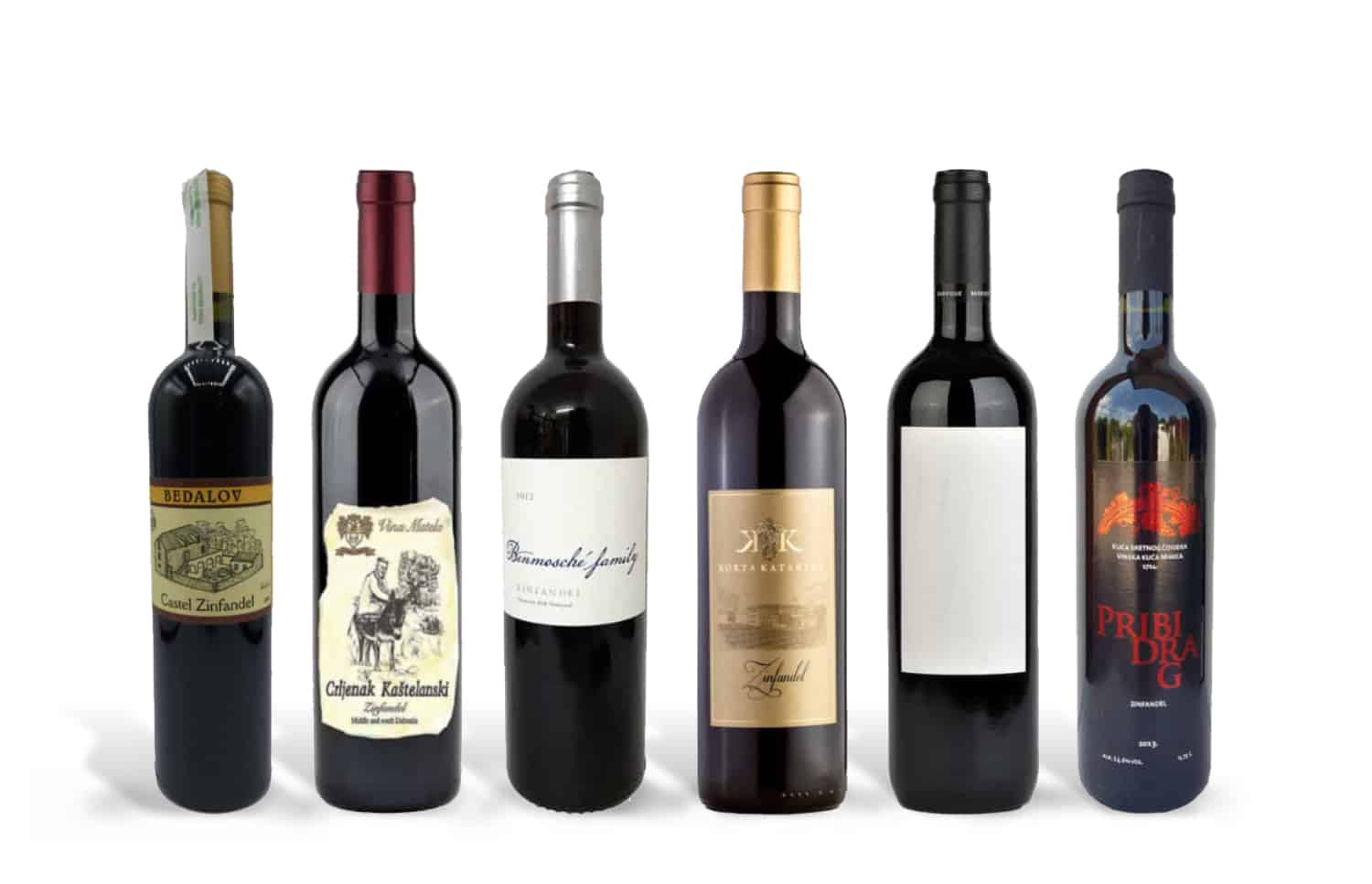
Insight is shared, and bottles are evaluated at these gatherings while potential buying decisions take shape. Those fully immersed in a given theme often spread their influence to others, not necessarily because they are all Instagram influencers, but simply by word-of-mouth and personal recommendation.
Marketwise, it is well-established that wine styles go in and out of fashion. It might not always be as extreme as “oaked” vs. “anything-but-wood,” but consumers and wineries tend to adapt based on whatever is perceived as a likely improvement. Multiply that situation, and eventually, a preference change will occur.
A likely improvement. But then, what does “better” mean? And “better” than what?
“Better” is, of course, a concept that needs defining and redefining. Over and over again.
It is a thankless task to try and get a read on the exact degree to which Croatia’s Zinfandels can influence California Zin’s established markets. Still, figures alone will never paint the whole picture, will they?
The most important thing is that wine enthusiasts are now delving into the history of these grapes and the role they have played in shaping the modern wine industry.
As the discovery of Zin’s true origins continues to make headlines, the world of wine is abuzz with excitement over the possibilities that lie ahead for Croatian wine.
What about Plavac mali, Mike Grgich and Zinfandel?
Plavac Mali is the most planted red grape variety in Croatia (to be precise, on the Dalmatian coast of Croatia). Plavac Mali is probably the best-known Croatian wine, and if you are just starting to get to know Croatian wines and haven’t tasted it before, it should definitely be at the top of your list.
Many of Croatia’s best – and most expensive – wines are made from the Plavac Mali variety.
The old Latin saying ‘It’s all in the name’ and it’s true for Plavac Mali, as plavac means ‘blue’ and mali means ‘small’: the name accurately describes the small blue grapes of the vine. The wine is very powerful, robust, rich in taste, and high in alcohol and tannins.
Plavac Mali has a very interesting history of origin and family background that has caused many wine experts to become obsessed with tracing its origins. Plavac Mali has even been subjected to DNA research and has starred in the documentary ‘Dossier Zinfandel’.
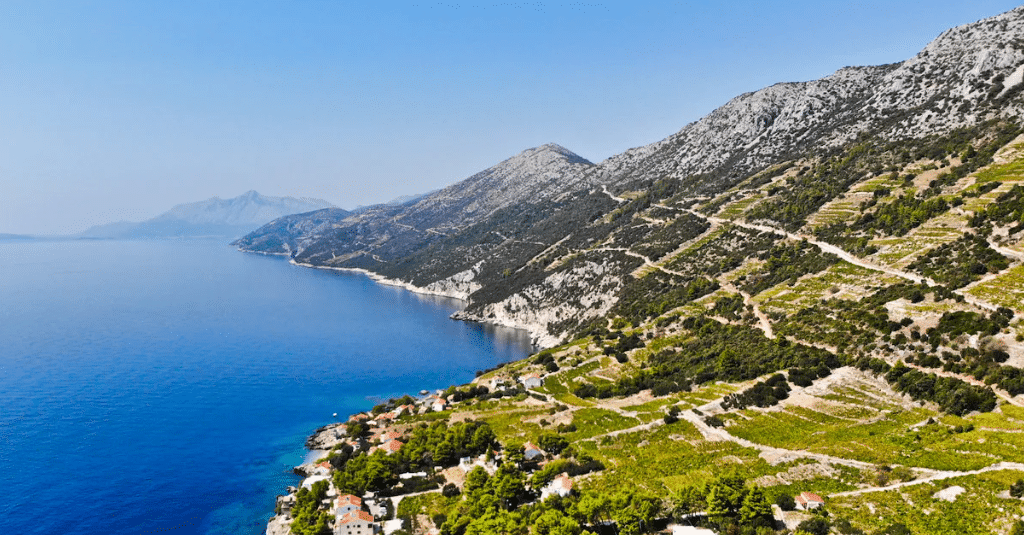
We now know that Plavac Mali is a cross between Crljenjak Kaštelanski (ancestral Zinfandel) and Dobričić (an ancient red wine grape variety from the Dalmatian coast) grapes.
But for a long time, Plavac was confused with Zinfandel, the famous Californian wine. If a Californian tasted Plavac Mali, he would undoubtedly say that it reminded him of home – the meaning of Zinfandel.
The ‘tastes like home’ feeling also struck Mike Grgich, a native Croatian winemaker and founder of Grgich Hills Estate in Napa Valley, when he arrived in California in 1958.
‘Looking at the vines, I wondered whether I was in Croatia or in California’, Grgich said in the Dossier Zinfandel documentary.
Grgich claimed that Zinfandel’s origins have to be in Croatia and that Zinfandel is either Plavac Mali or a close relative.
Later on, he found out that Plavac Mali, a native red grape from Croatia, has been found to be a cross between two other native Croatian varieties, Crljenak Kaštelanski, and Dobričić.
What’s more, Crljenak Kaštelanski is actually an ancient clone of Zinfandel. This discovery was made possible by extensive research that showed Zinfandel’s journey from Croatia to Puglia, Italy, before eventually making its way to California.
Nowadays, Plavac Mali grows in the sunny southern parts of Dalmatia, from islands Hvar and Brač to the Pelješac peninsula and its Dingač appellation, from which comes one of the best Plavac Mali in the region. This wine case is the best way to taste for yourself what Dingač has to offer.
Uncover the fascinating story of Dingač in this video.
Notable producers of wines from the Dingač appellation include:
- Matuško winery,
- Bura-Mrgudić winery,
- Edivo winery,
- Benmosche winery,
- Madirazza winery,
- Kiridžija winery,
- Dingač winery,
- Matković winery,
- Saint Hills Winery,
- Vicelić winery,
- Skaramuča winery.
Conclusion
To conclude, when selecting a Croatian wine as a gift for someone, it’s worth considering a bottle of Crljenak and comparing it to California’s Zinfandel and Italy’s Primitivo from Apulia.
Why not add a little bit of Plavac Mali, to taste Crljenak descendants firsthand?
The best way to compare those wines is a good old blind tasting. Now, whose Zinfandel is better remains to be defined, it’s a topic open for discussion.
The best way to start that conversation is to taste them and with your fellow wine lovers and enthusiasts decide for yourself!
But, remember, apart from differences in terroir and winemaking process, which deeply affect the style, texture, and aromatic profile, there is only one origin of Crljenak, Zinfandel, and Primitivo – and it’s Croatia.



